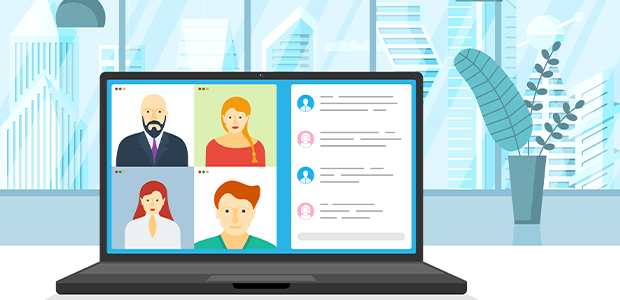
Virtual Burnout – 73% of UK professionals having work day interrupted by virtual meetings
A recent poll by specialist recruitment company Robert Walters revealed that 73% of professionals believe virtual meetings hinder their productivity, with over half (53%) reporting that their workday is regularly disrupted.
The findings indicate that virtual meetings often interrupt professionals' actual working time, distracting them from their tasks. Last week, online retailer ASOS cautioned its staff that virtual meetings, as opposed to face-to-face interactions, were having a detrimental effect on the company’s performance.
Daniel Harris, Director of Robert Walters London & South East comments: "Throughout the pandemic, virtual meetings were indispensable for maintaining communication and connection with our colleagues and teams.
“However, the tide is now shifting – as more professionals return to the office, we're still seeing Teams or Zoom meetings being scheduled for things that could be more efficiently and effectively handled through a brief message or email."
A quarter of professionals in the UK have over five virtual meetings a day in their diaries, while a third have up to 4 – with the average video call taking up to 30 minutes this could mean that between 2-2.5 hours are being taken away from professionals' average workday.
Late last year Slack found that anything over two hours’ worth of meetings per work-day actually reduces professional’s productivity levels.
Daniel notes: “Meetings make up a vital part of almost everyone’s work day, but managers and senior leaders must be careful that they are using virtual meetings to aid productivity not hamper it.”
On the flip side - when professionals were asked about how productive they found virtual meetings, over half (56%) stated it was entirely dependent on the meeting – with some being quite productive, whilst others felt like a waste of time.
A further 13% thought virtual meetings were not very productive at all.
The poll also revealed that a third of meetings are held virtually despite up to half of the attendees being in the same office.
Daniel comments: “The success / productivity of a virtual meeting is dependent on a range of factors like who has organised the call, the number of attendees, whether there is clear plan of proceedings, what will be addressed and how engaged each person is.
“Unlike in person meetings, during virtual meetings body-language or other social cues can be missed, hindering the natural flow of conversation. This can lead to professionals’ ‘zoning-out’ or even turning off their camera to hide the fact they are doing other things.”
Indeed a recent study from YouGov found that up to 12% (increasing to 21% of 18-29 year olds) of professionals in the UK have admitted to even going for a toilet break during a work video call.
Resoundingly – 62% of Gen-Z cite messaging apps such as MS Teams or WhatsApp as their preferred form of communication – whilst a third of professionals over 27 years prefer email.
Only 5% of professionals of all ages prefer virtual meetings when they are looking to get their heads down, and get things done.
Daniel comments: “Simple questions, even catch-ups or handovers can sometimes be more easily addressed in a quick message or email chain – resulting in less disruption to professionals’ actual working time.”
The poll also asked professionals what would be their team’s preferred form of communication to make important business decisions – over three-fifths (67%) voted for an in-person meeting, with half the amount (31%) of professionals opting for a video-call.
Daniel adds: “In-person meetings give teams the chance to discuss the work-at-hand but also to catch-up and brainstorm informally, helping them feel connected to both their work and their team – even easing the stresses of their working day – benefits which are often lost when held virtually.”
Daniel concludes: “Behind every successful workplace, is clear and consistent communication at all levels.
“Maintaining this requires a tailored approach – assessing the most effective ways of communicating without placing on over-reliance on any single one to ensure professionals’ always get the most out of their workday and sidestep burnout.”

